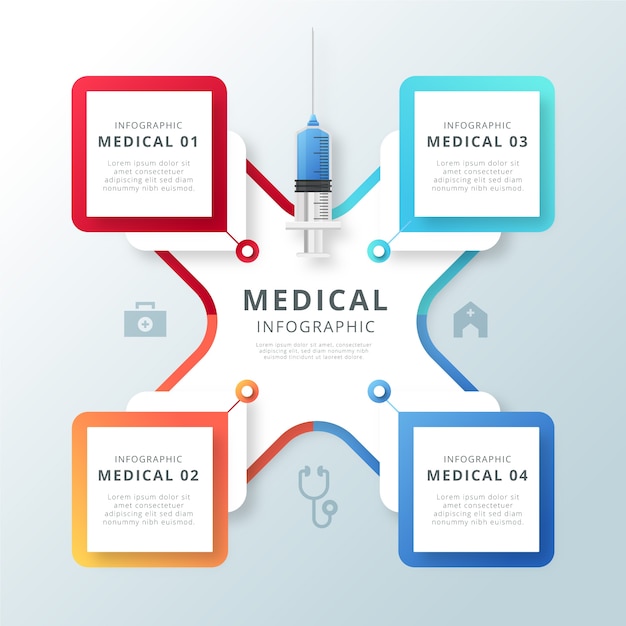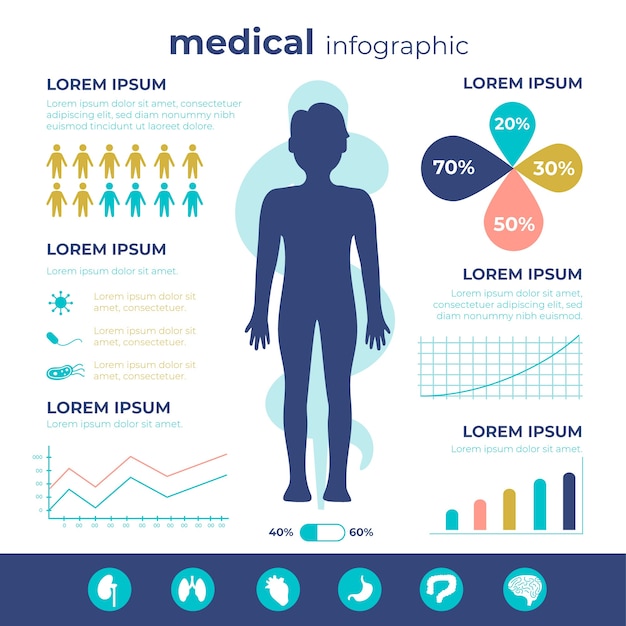
MEDICAL INFOGRAPHIC DESIGN HOW TO
By monitoring trends and the health and demographics of the world’s populations, epidemiologists learn how to prevent a disease and manage it. The use of useful health information goes beyond preventing disease. While the United States has developed health information collections by coordinating state and federal public health programs, other countries have not.Ĭontent Marketing What Is Google’s Keyword Planner Good For? American Hospital Association AHA (Image Below)ĭata sets like these from the CDC and WHO provide comprehensive but up-to-date statistical analysis about the populations’ health to prevent disease and protect people from illness.Center for Disease Control and Prevention CDC.Top Health Information sources for healthcare infographic data: Useful Health Information For InfographicsĪccording to the Center for Disease Control (CDC) and the World Health Organization (WHO), useful health data is: “the important health data set that accurately informs and guides public health efforts.” Likewise, the World Health Organization defines it as: “a compilation of facts about diseases, health issues, demographics, and prevention, developed by the WHO and other global health organizations.” In contrast, when information is in visual form, people retain approximately 65% of it three days later. No matter who made the presentation or who listened to it, most people only remember about 10% of what they read three days later. More than half of the population prefers to see color-based messages to black and white ones. When used correctly, colors can increase attention spans by 82% and memory by 86%. By using color in infographics, we can make information easier to remember.
MEDICAL INFOGRAPHIC DESIGN FREE
With the help of free medical infographic templates, we make our most important messages easy to understand and remember. ( ImpactPlus) Using Color in Infographics In fact, 62% of Gen Z and Millennial consumers want visual search more than any other new technology. This information process gives us our memories.ĭid you know? Images are returned for 22.6% of search queries on Google. Once it receives the information, the visual system processes it twice. Once it reaches the cerebrum, it passes on to the rest of the nervous system. Understanding why visualizing your data helps to consider how all the visual information passes through the brain. Therefore, poor visual function can affect not only our short term memory (the information that stays in our short term memory) but also (and perhaps most importantly) our long term memory. The brain is mainly used for visual processing, as previously mentioned. Here’s where imagery comes into play, helping your brain make sense of the world around you. For example, according to the Laws of Physics, when we are driving, we must keep our eyes on the road. Visualizations are valuable because they force us to ask and answer specific questions. This process is beneficial when trying to deal with the complex world of the visual cortex.Įight common types of free medical infographic templates: We visualize various situations and objects in our minds, and then we translate these mental pictures into physical manifestations.

The second way in which we process visual information is through the so-called mental imagery. This confirms that appealing to traditional visual processing methods (i.e., hand/eye coordination and the ability to “feel” a situation) enhances comprehension when dealing with graphs, charts, or other visual presentations. Visual information is beneficial since people only remember 20% of what they read, but 80% of what they see. This mental process is responsible for producing brain maps. Visualization is the process of mentally taking all the data you have absorbed and transforming it into a more easily-understood form. In this article, we will discuss why medical infographic examples are a necessary tool.

At the same time, the rest of our faculties are primarily concerned with the processing of verbal and non-verbal information. We only use a fraction of our brains for visual processing. It is not just a matter of visually looking things up but also involves processing all the information we encounter in our daily lives.


A visualization is a powerful tool that allows us to make sense of the world around us.


 0 kommentar(er)
0 kommentar(er)
